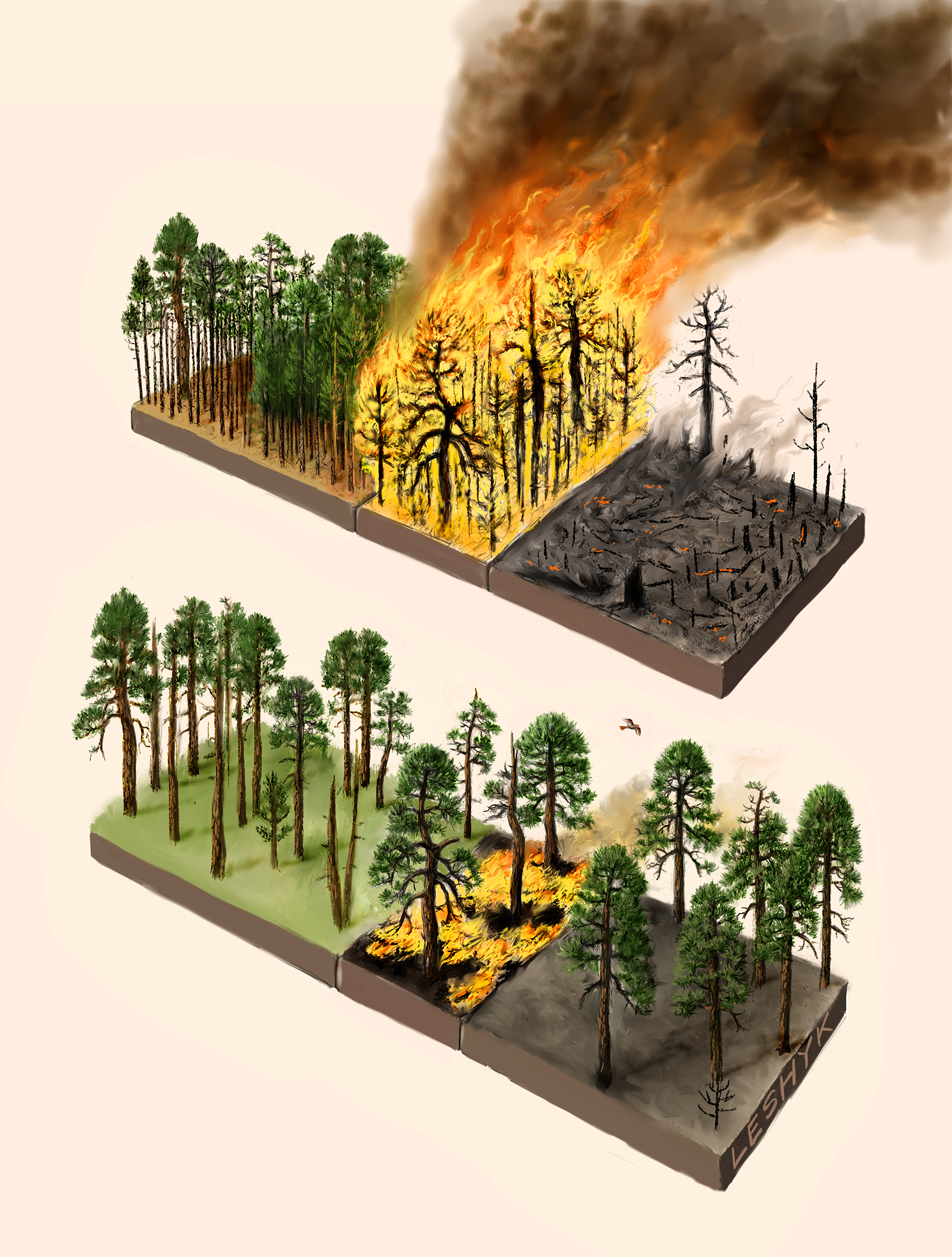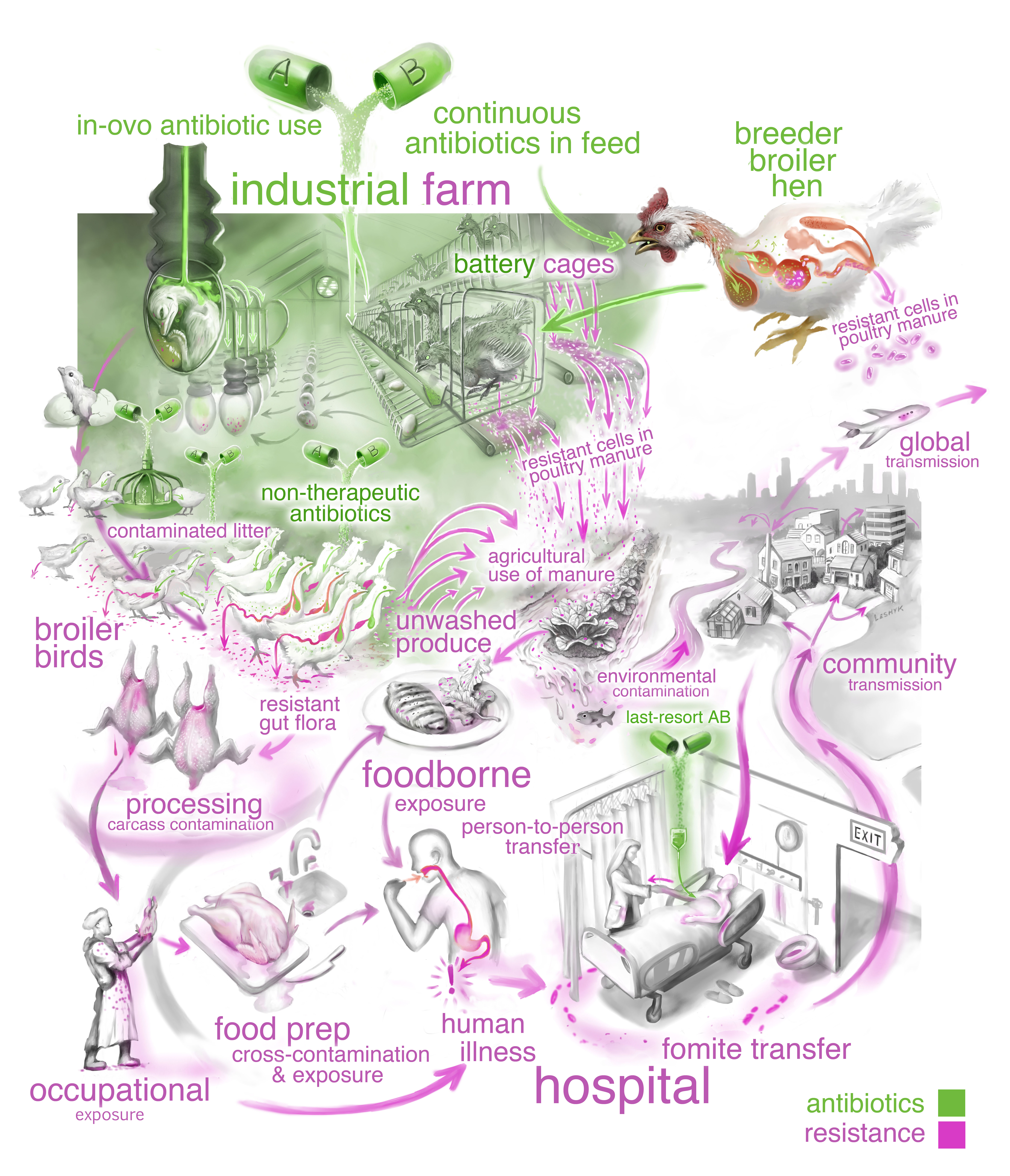Carbon protection and fire risk reduction: toward a full accounting of forest carbon offsets

 Longstanding land-management policies of complete wildfire suppression on wild lands were intended to prevent catastrophic wildfires through constant human monitoring and intervention. However, when combined with policies that prohibit logging or thinning in protected areas, total fire suppression can lead to giant conflagrations anyhow, as the buildup of fuel materials in dense undisturbed forest will feed any small blaze into a fast-spreading crown-fire that consumes large areas quickly through stand-replacing wildfire (top scenario in illustration). Natural cycles of seasonal low-intensity “ground fires” stabilize fire-adapted landscapes by burning only small trees while larger specimens survive, creating a stage of widely-spaced fire-resistant older trees (bottom scenario in illustration). Restoring this forest architecture through policies of strategic thinning creates fire-resistant landscapes which acquire and store more carbon over time than denser fire-prone forests, which release large amounts of carbon through catastrophic burns.
Longstanding land-management policies of complete wildfire suppression on wild lands were intended to prevent catastrophic wildfires through constant human monitoring and intervention. However, when combined with policies that prohibit logging or thinning in protected areas, total fire suppression can lead to giant conflagrations anyhow, as the buildup of fuel materials in dense undisturbed forest will feed any small blaze into a fast-spreading crown-fire that consumes large areas quickly through stand-replacing wildfire (top scenario in illustration). Natural cycles of seasonal low-intensity “ground fires” stabilize fire-adapted landscapes by burning only small trees while larger specimens survive, creating a stage of widely-spaced fire-resistant older trees (bottom scenario in illustration). Restoring this forest architecture through policies of strategic thinning creates fire-resistant landscapes which acquire and store more carbon over time than denser fire-prone forests, which release large amounts of carbon through catastrophic burns.


